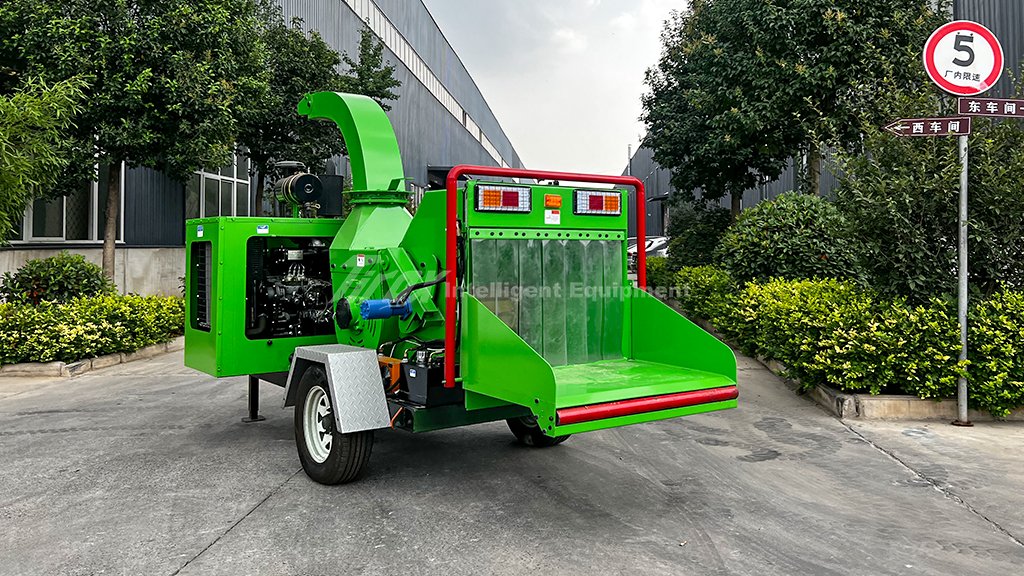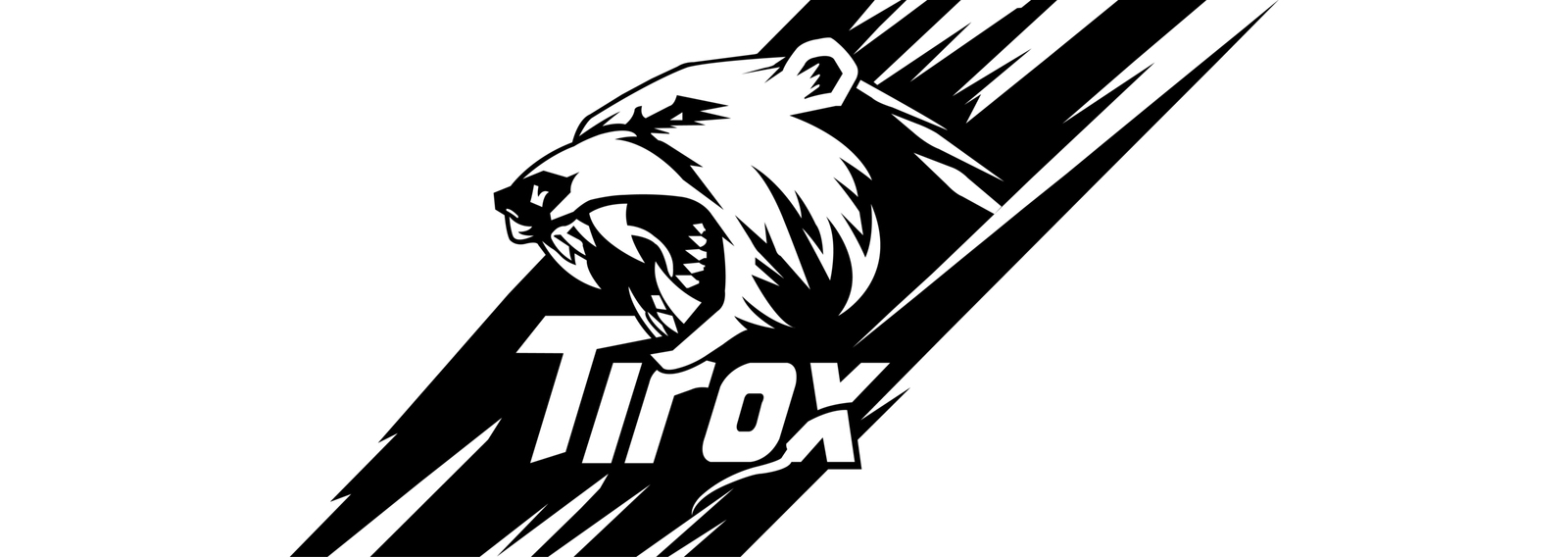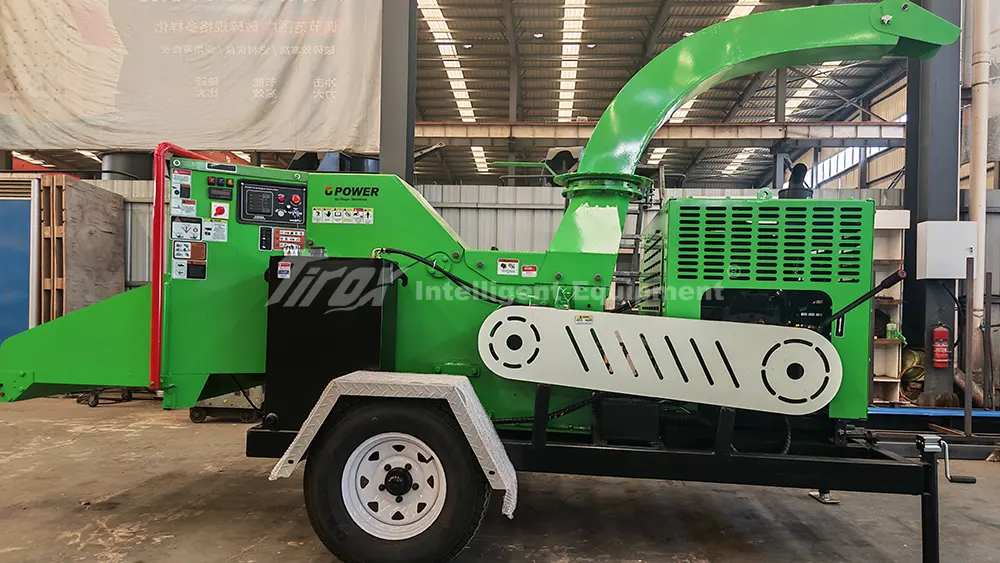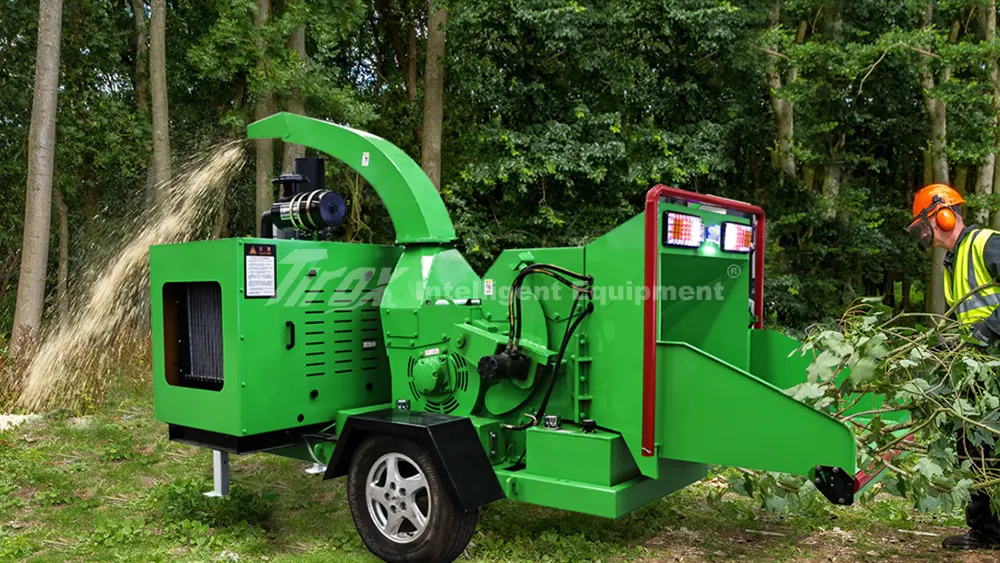Wood chippers are powerful tools, but they can cause serious harm if you are not careful. Many accidents happen because people don’t follow safety rules. This makes a simple job dangerous.
Using a wood chipper safely means understanding its dangers, always wearing the right safety gear, and following correct operating steps. Regular checks and proper maintenance are also very important for safety.
These machines help us a lot, but we must respect their power. Learning about wood chipper safety is not just a good idea; it is necessary for anyone who uses or works near these machines. Let’s look at how to keep safe.
How dangerous are wood chippers?

Worried about using a wood chipper? These machines are strong and can be risky if you don’t know the dangers.
Wood chippers are very dangerous if not used with great care. The main risks come from the fast-moving cutting parts and materials being pulled in or thrown out, which can cause severe injuries.
I have been in this business for 22 years, and I have seen how important safety is. Wood chippers are designed to break down tough wood, so they have a lot of power. The biggest dangers are:
- The Infeed Chute: This is where you put the wood in. If you are not careful, the machine can pull your hands or clothes in very quickly. This is a major cause of serious accidents.
- Cutting Blades or Drums: Inside the chipper, sharp blades or a heavy drum spins at high speed. If any part of your body comes into contact with these, it can lead to terrible injuries like losing fingers or hands.
- Ejected Materials: Small pieces of wood, rocks, or other debris can be thrown out of the infeed or discharge chute at high speed. These pieces can hit you or others nearby, causing eye injuries or other harm.
- Noise: Wood chippers are very loud. Working around them without hearing protection for a long time can damage your hearing permanently.
- Moving Parts: Besides the blades, there are belts, pulleys, and sometimes drive shafts. These can catch loose clothing or hair if guards are missing or if you get too close.
It is very important that anyone using a wood chipper understands these risks. Training is key. We always stress that knowing the machine and being aware of your surroundings can prevent most accidents.
how to safely use a wood chipper?
Want to use a wood chipper without getting hurt? Following the right steps every time is the best way to stay safe.
To safely use a wood chipper, always wear Personal Protective Equipment (PPE), check the machine before starting, feed materials carefully, and never put your hands or feet into the chutes while it’s on.
From my experience, a safety routine is your best friend when working with wood chippers. It is not just about knowing the rules; it’s about doing them every single time.

Before You Start: Preparation is Key
- Inspect the Chipper: Walk around the machine. Check that all guards and safety shields are in place and secure. Look for any loose bolts, damaged parts, or leaks. Make sure the cutting blades are sharp and not damaged. If something is wrong, do not use the machine until it is fixed.
- Check the Work Area: Make sure the ground is level and stable. Clear the area around the chipper of any tripping hazards like rocks, tools, or extra wood. Keep bystanders, especially children and pets, far away from the operating zone.
- Wear Your PPE: This is not optional. The right gear protects you.
PPE Item Why It’s Important
Hard Hat Protects your head from falling branches or ejected debris.
Safety Glasses/Goggles Keeps wood chips and dust out of your eyes.
Hearing Protection Reduces harmful noise levels.
Thick Gloves Protects hands from splinters and abrasion. Don’t use loose gloves that can get caught.
Sturdy Boots Steel-toed boots give good grip and protect feet.
Snug-fitting Clothing Loose clothes, drawstrings, or jewelry can get caught in moving parts. Tie back long hair. During Operation: Careful Actions- Starting Up: Follow the manufacturer’s instructions for starting the chipper. Let it warm up to full operating speed before feeding material.
- Feeding Material: Feed branches butt-end first. Let the chipper pull the material in; do not force it. Use a long push stick for short pieces, never your hands or feet. Feed one piece at a time if possible.
- Stay Alert: Pay attention to the machine’s sounds. If it sounds like it’s struggling, stop feeding and let it clear. Never reach into the infeed hopper or discharge chute while the chipper is running. If it gets clogged, turn off the chipper completely and wait for all moving parts to stop before trying to clear it.
- Emergency Stop: Know where the emergency stop controls are and how to use them.
- Approved Materials: Only chip clean wood and branches. Make sure they are within the size limits specified by the chipper manufacturer. Our tracked horizontal grinders, for example, can handle larger, more complex materials, but even they have limits.
- Materials to Avoid:
- Metal, Stones, Concrete: These can severely damage the blades or internal parts. They can also be thrown out at very high speeds, becoming dangerous projectiles.
- Plastics or Rubber: These can melt, create fumes, or wrap around moving parts.
- Pressure-Treated Wood or Wood with Nails/Staples: Chemicals in treated wood can release harmful fumes when chipped. Metal can damage blades.
- Excessive Dirt or Mud: This can dull blades quickly and cause unnecessary wear.
- Very Wet or Stringy Green Material: This can sometimes wrap around the drum or cause blockages more easily.
Feeding the wrong things can cause sudden machine failure or create unexpected hazards.
- Daily Checks: Before each use, inspect blades for sharpness and damage. Check belt tension and condition. Look for any hydraulic fluid or oil leaks. Ensure all safety decals are clean and visible.
- Routine Servicing: Follow the manufacturer’s schedule for greasing bearings, changing oil and filters, and inspecting wear parts. Dull blades require more force to chip, can cause kickbacks, and strain the machine. Sharp blades make the job easier and safer.
- Professional Checks: Have your chipper inspected by a qualified technician regularly, especially if it’s used heavily. They can spot problems you might miss.
We always provide detailed maintenance schedules because we know it prevents bigger problems and keeps operators safer.
- Full Training: Operators must read and understand the owner’s manual. They should be trained on startup, shutdown, safe feeding, and emergency procedures.
- Know the Machine: Understand its capabilities and limitations. Don’t try to make it do more than it’s designed for.
- Work with a Buddy: If possible, work with another trained person. One can feed the chipper while the other watches for problems and can help in an emergency.






